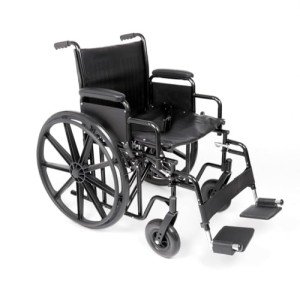The People Closest To Bariatric Wheelchair 24 Inch Seat Tell You Some Big Secrets

Bariatric Wheelchair Seat Width
Seat Width
Having the correct seat width is essential to wheelchair users who invest longer periods in their chairs. Too narrow a seat will trigger pressure on the hips and thighs which might result in sores or pressure points. Having too large a seat can also make it challenging for the user to reach the hand rims to move themselves or maneuver in little spaces.
To measure the proper seat width a person would sit on a chair normally and have their measurement taken throughout their lap at the largest point which is typically their hips. A wheelchair measuring tape can be utilized to measure this, but a lawn stick is chosen as it prevents individuals from covering the tape around their hips which would offer an incorrect result.
The standard wheelchair seat width is 16" (narrow grownup), 18" (standard grownup), and 20" (broad adult). For bariatric clients, a 24" seat is available. This sturdy extra large bariatric wheelchair from Medline features swing-away footrests, a carbon steel frame with rust- and chip-resistant chrome plating, and easy-to-clean vinyl upholstery. It has a weight capacity of 500 pounds.
Seat Depth
Generally, the seat depth of a bariatric wheelchair was added 2" to the measurement taken at the user's widest point (normally their hips). This was indicated to accommodate extra layers of clothing that might be used during winter. However, this practice is ending up being less common as wheelchair users are able to spend more time inside your home and are not using long coats. This makes the seat depth of a chair less crucial when selecting a bariatric wheelchair. However, it is still important to select an alternative that offers appropriate assistance for larger users.
The Medline folding extra wide bariatric manual wheelchair features a comfortable 24" seat width and a sturdy slide tube silver vein frame. It also has an adjustable axle and tool-free elevating legrests.
Seat Height
When it concerns determining the appropriate wheelchair seat width you must constantly measure from the user's widest point which is normally their hips. You will also require to think about whether the user is going to be wearing a winter season coat as this may add 2" to the width required.
When a wheelchair remains in use it ought to just be operated on level surface areas with the wheel locks totally engaged. This is to avoid the chair from being able to move inclines that are 10 degrees or higher. It is likewise essential to keep in mind that any activity that might move the center of gravity in the chair ought to be made with care. This consists of grabbing items that require the individual to lean out of their seat or attempting to stand up from it.
Whenever you have the chair in usage it is advised that you frequently examine it for damage and lube any areas that are considered required. For instance, the casters must be oiled by removing the caster fork and utilizing a multi-purpose grease to use to the caster stem bearings. Also, the foot plates can be changed by loosening up the bolt and then moving them to the wanted position. This allows the feet to sit easily on the footplate and prevents any pressure points from forming. This can be extremely uncomfortable for the user and if left ignored, can result in pressure sores.
Weight Capacity
Bariatric wheelchairs are designed to support more weight than basic wheelchairs. This makes them stronger and better geared up to deal with falls. They are also typically larger and broader, making them less maneuverable in tight areas than basic wheelchairs. They need automobiles with unique ramps and lifts to load them, in addition to drivers who understand how to best transport them from one location to the next.

When choosing a wheelchair, consider its weight capacity as it will be the primary determining consider whether it will accommodate your guest's requirements. The weight capacity of the chair is typically noted as a fixed load, meaning that it shows the amount of weight the chair can comfortably hold while stalling. However, some makers likewise list an active load that is based upon a drop test and can imitate the impact of somebody sitting down in the chair. This may be a more reputable measurement of the weight limit, depending on your requirements.
If bariatric self propelled wheelchair plan to carry out activities that shift your center of mass in the seat (such as reaching for objects), make sure to have front casters pointed in a forward instructions and wheel locks engaged so the chair will not topple. Also, examine that casters are oiled regularly to prevent extreme wear and abrasions. The lubrication procedure includes getting rid of the fork, separating the caster from the wheel, and greasing the caster stem bearings with premium multi-purpose grease.
